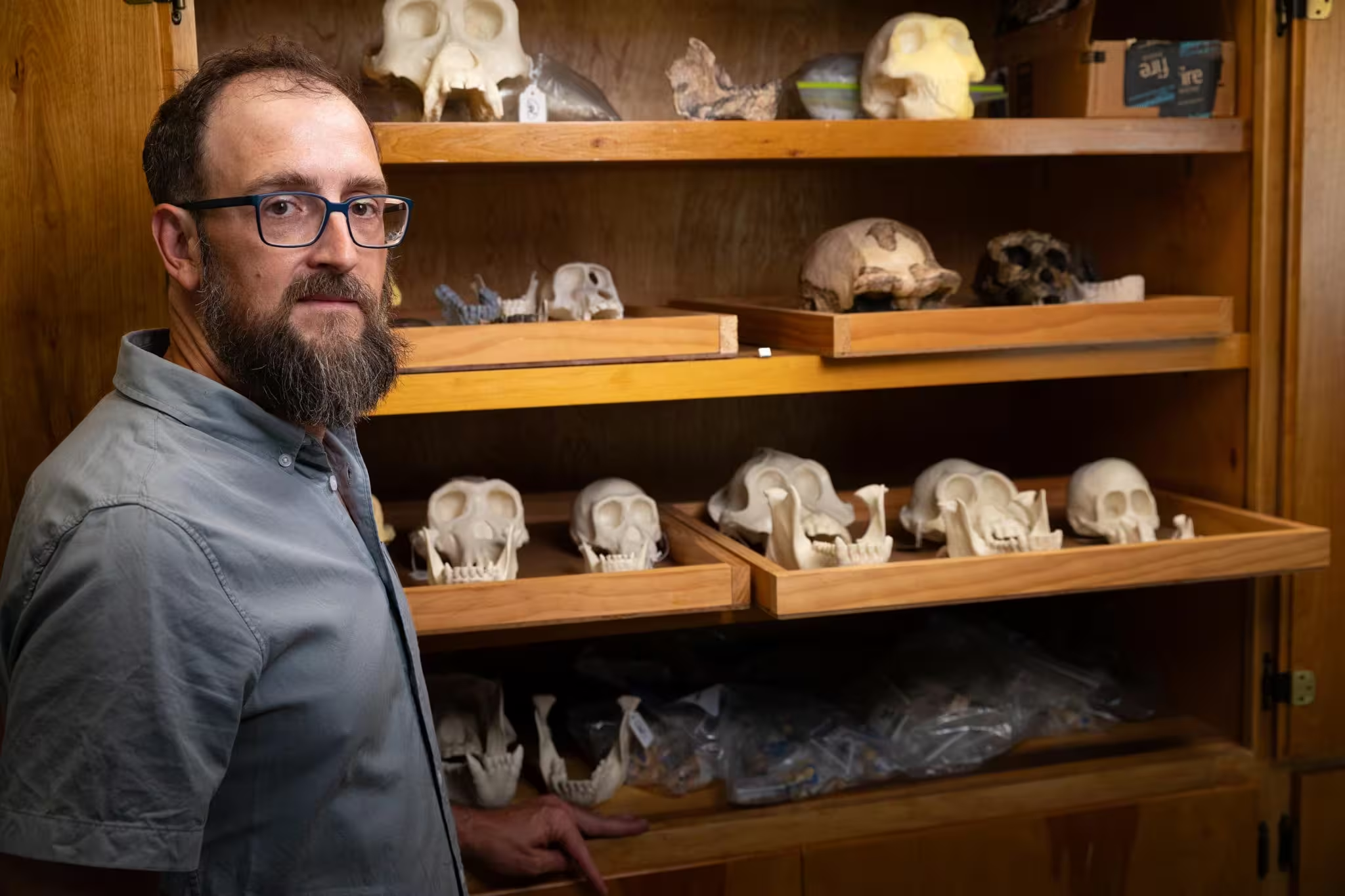6 Minutes
New fossil evidence from Ethiopia’s Afar Region reveals an unexpected chapter in our deep past: early members of the Homo lineage and Australopithecus occupied the same landscape roughly 2.6–2.8 million years ago. These finds reshape how scientists understand early human evolution and the ecological dynamics among coexisting hominins.
Fossils from Ledi-Geraru rewrite a missing chapter
Excavations at the Ledi-Geraru Research Project in Ethiopia have yielded hominin teeth dated between about 2.6 and 3.0 million years old. An international team of more than 20 researchers — including Lucas Delezene, an associate professor of anthropology at the University of Arkansas — used geological context and dental anatomy to establish new timelines for early Homo and a contemporaneous Australopithecus population.
The study, supported by the National Science Foundation and the Leakey Foundation and published in Nature, establishes the oldest confirmed record of Homo at roughly 2.8 million years ago, with additional Homo teeth dated to 2.6 million years. Crucially, the evidence shows that these early Homo individuals shared the same region and time window with Australopithecus, overturning the prior belief that Australopithecus had already vanished from the Afar area by about 3 million years ago.
Why this overlap matters
For decades, many people pictured human evolution as a tidy, linear progression: one species morphs into the next and the rest disappear. The Ledi-Geraru finds challenge that image. The hominin family tree is better described as a branching, bushy network in which multiple species coexisted, interacted, and likely competed for resources.
Lucas Delezene explains that the discovery reveals a more complex pattern: early Homo didn’t instantaneously spread and replace other hominins. Instead, Homo populations lived alongside different relatives across Africa. In southern regions, early Homo fossils overlap in time with Paranthropus — a robust hominin with large teeth adapted to heavy chewing. But in the Afar Region the fossil record lacks Paranthropus; here Homo shared the landscape with Australopithecus instead.

Lucas Delezene, associate professor of anthropology. Credit: University of Arkansas
Teeth tell a clear, durable story
All the newly published hominin remains are dental fossils. Teeth tend to preserve far better than bones because enamel is highly resistant to decay and abrasion, so paleoanthropologists often rely on dental evidence to track evolutionary relationships.
Delezene, who specializes in hominin dental anatomy, notes that the differences between Homo teeth and those of Australopithecus are subtle but consistent. Once those distinctions are seen, they’re unmistakable — a reliable signal that two distinct hominin lineages lived in the same area.
What the teeth reveal — and what they don’t
- Age: Geological dating constrains the fossils to about 2.6–2.8 million years ago, filling a gap in the 2–3 million-year interval that has been sparsely represented in the fossil record.
- Taxonomy: Dental morphology supports identification of both early Homo and Australopithecus individuals at Ledi-Geraru.
- Missing anatomy: The team currently lacks cranial or postcranial bones from the same individuals, so details about skull shape, body size, and locomotion remain unknown.
The absence of associated stone tools or direct evidence of meat-eating at Ledi-Geraru complicates interpretations. Many later Homo populations show cultural traits — tool manufacture and cut-marked bones — that likely contributed to Homo’s success. The new Ledi-Geraru Homo specimens predate that clear archaeological signature, prompting questions: Did Homo evolve tool use and dietary flexibility to reduce competition with other hominins? Or did these behaviors emerge later, enabling global expansion?
Ecological puzzles: competition, diet, and niche partitioning
How multiple hominin species coexisted is a central question. Did they specialize on different foods or habitats, or did they overlap heavily and compete? In southern Africa, Paranthropus shows clear adaptations for grinding tough vegetation. The Afar Australopithecus, however, may have pursued a different dietary strategy, leaving room for Homo to exploit other resources — or perhaps the opposite was true.
Understanding resource partitioning requires not only more fossils but also paleoenvironmental data: what plants and animals were available, how climate was shifting, and how landscapes changed seasonally. Ledi-Geraru’s stratigraphic and geological work provides that contextual backbone, enabling researchers to place the fossils within a dynamic ecological picture.
Fieldwork in Ethiopia is carried out in partnership with the Afar community, whose local knowledge and cooperation are crucial to locating and excavating fragile fossils. Continued funding and international collaboration will be essential if researchers are to recover postcranial remains and any potential archaeological materials that could illuminate behavior.
Expert Insight
"These teeth may be small fossils, but they punch far above their weight in what they tell us about hominin diversity," says Dr. Maya Singh, a paleoanthropologist at the Institute for Human Origins. "The Ledi-Geraru finds remind us that early human evolution was played out across a patchwork of environments and neighbors. To understand how Homo became us, we need to map that patchwork in detail — one fossil at a time."
In short, the Ledi-Geraru discoveries deepen an emerging portrait of early human evolution as a mosaic of overlapping species, shifting ecologies, and adaptive experiments. Each new fossil adds resolution to a story that is still being written in teeth, sediments, and the landscapes of East Africa.
Source: scitechdaily
Comments
DaNix
Is this even solid? teeth diffs sound subtle, dating methods messy, idk. Hope they find skulls tho.
labcore
Wow, teeth telling such a complex story... mind blown. So many hominins sharing space, not a straight line. Need more bones tho, hurry up paleo teams!


Leave a Comment